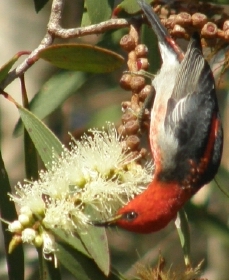
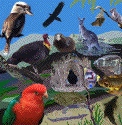
Deepen your understanding of Australian wildlife, how it came to be so different from other world regions, and why some parts of Australia are so different from others. Learn about unusual and fascinating behaviour of various species, and some important interactions between species in their ecosystems: all this while traveling to beautiful sites and seeking wildlife. Our guests can also become citizen scientists by participating in wildlife projects.

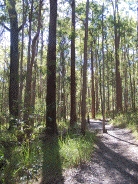

You will receive a copy of “Understanding Australia’s Wildlife” authored by Araucaria Ecotour proprietor Dr Ronda Green, who will accompany you for most of the tour.
Leaving the city, we head to the typical ‘Aussie bushland’ (eucalypt forests) of the Daisy Hill State Forest. Eucalypts are grown throughout the world nowadays but native eucalypt forests are found only in Australia and (to a much lesser extent New Guinea). Here you are introduced to some of the important families of bushland plants and what they mean to wildlife, as well as some local birds, termite mounds, and – if we are in luck – koalas.

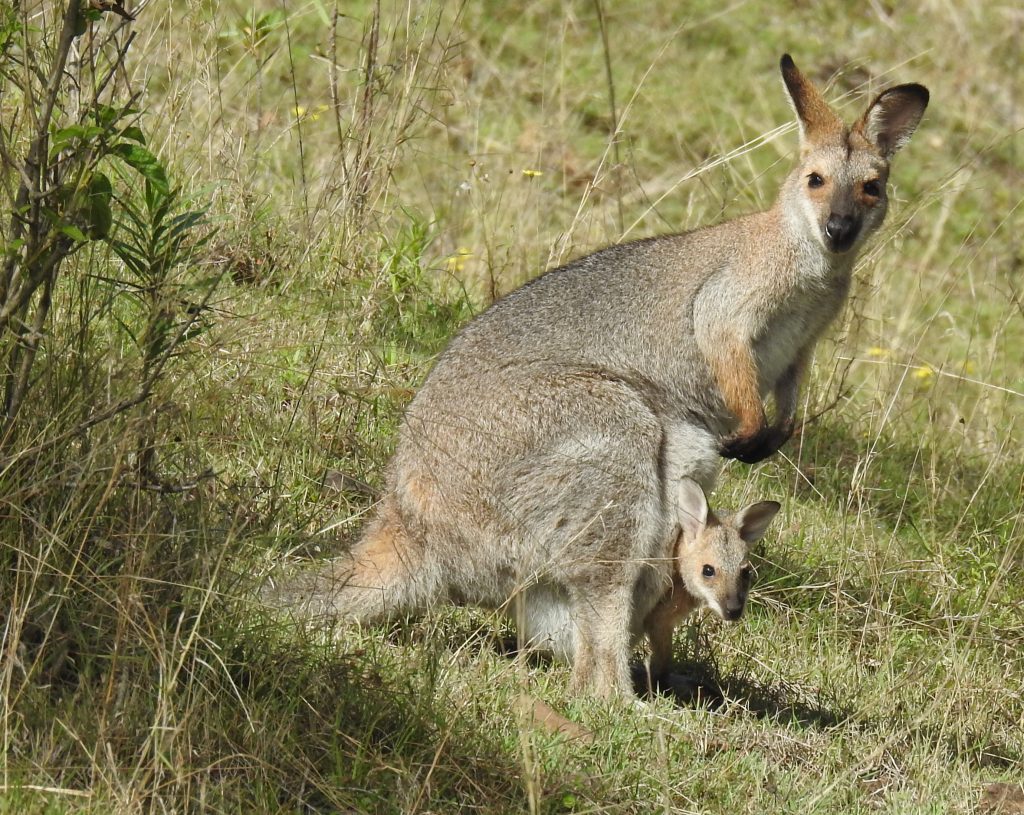
In cool weather, we may also see wallabies grazing on the grassy stretches (but they will soon start their day’s siesta under the shelter of the forest).
For a close-up look at koalas (no touching), we walk through a large enclosure in the Daisy Hill Koala Information Centre, learn a bit about the behaviour, anatomy, ecology and conservation problems of these famous marsupials.



We’ll then visit the Eagleby Wetlands to look for waterbirds, many of which are nomadic and unpredictable, but can include grebes, pink-eared ducks, other ducks, black swans, pelicans, darters, swamphens, magpie goose, black-necked stork, red-necked avocet, spoonbills, egrets, herons, ibis, stilts, or others) as well as bushbirds (e.g. striated pardalote, black-faced cuckoo shrike, brown honeyeater, scarlet honeyeater, red-backed fairy wren, superb fairy wren, mistletoe bird, sacred kingfisher, forest kingfisher, little corella, pale-headed rosella and of course laughing kookaburra), grassland birds (e.g. golden-headed cisticola, tawny grassbird, Australasian pipit) and raptors (e.g. white-bellied sea-eagle, Brahminy kite, whistling kite, black-shouldered kite).
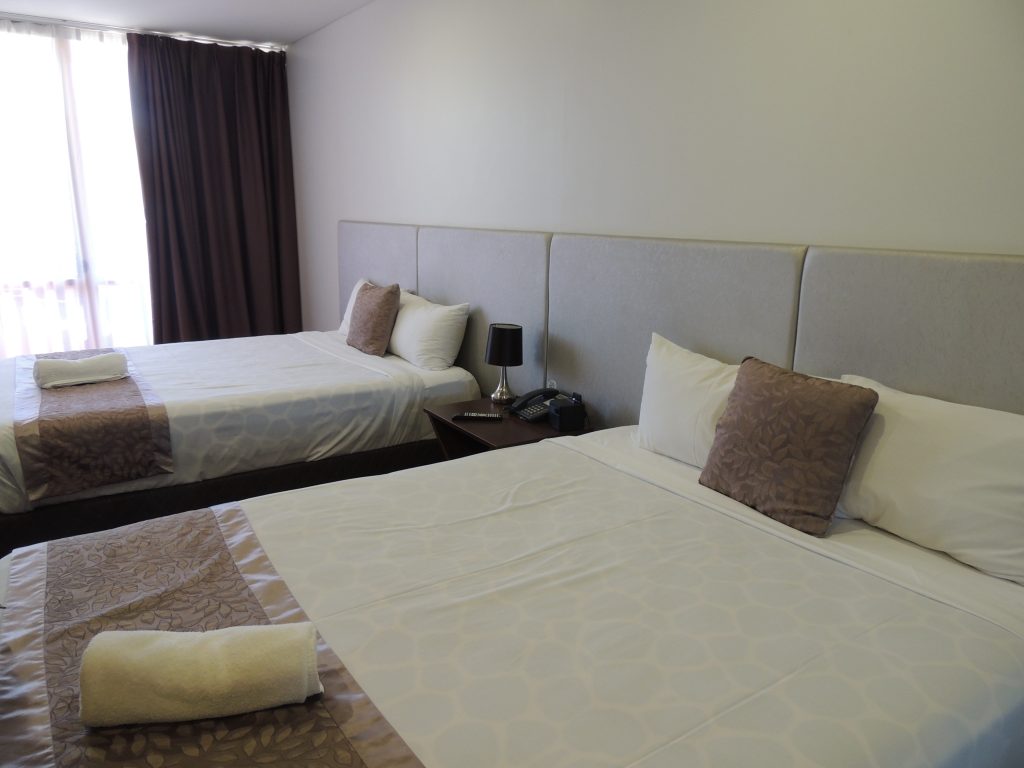
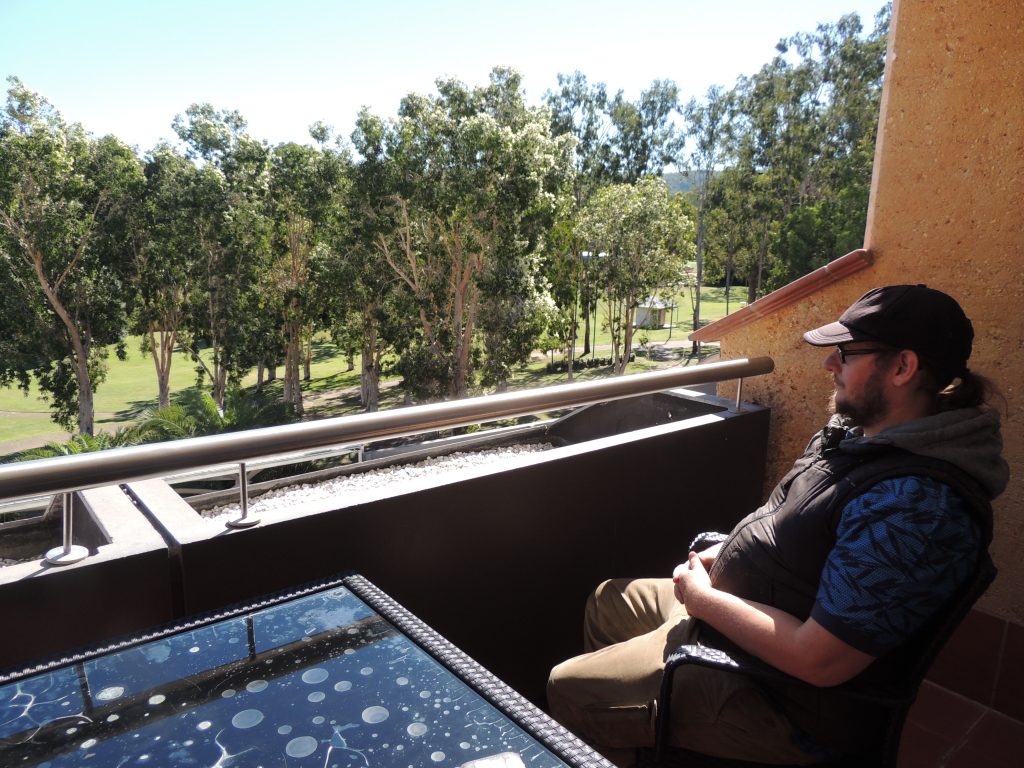
Our next stop is to check in at your home for the next two nights: The Kooralbyn Valley Resort, surrounded by bushland, golf course and grassy areas to which kangaroos and wallabies come to feed early in the morning and late afternoon. All rooms have bath and shower. The chef has extensive international experience and can cater for any special diet (vegan, allergy-avoidance etc.)
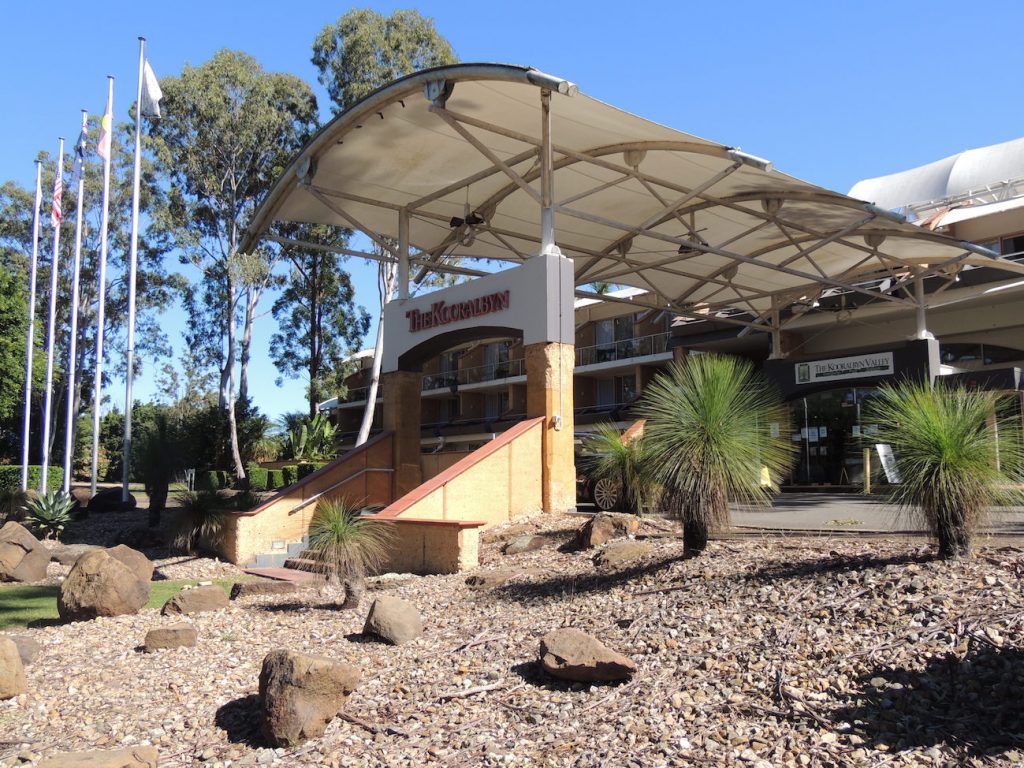

We now search for kangaroos, wallabies, and birds around Kooralbyn. We can usually get closer to them by staying in the vehicle and quietly cruising closer (excellent photo opportunities). If we do leave the vehicle we watch them from afar, or gradually approach, walking not directly towards them, but as though we’re going past, backing off at any signs of nervousness.
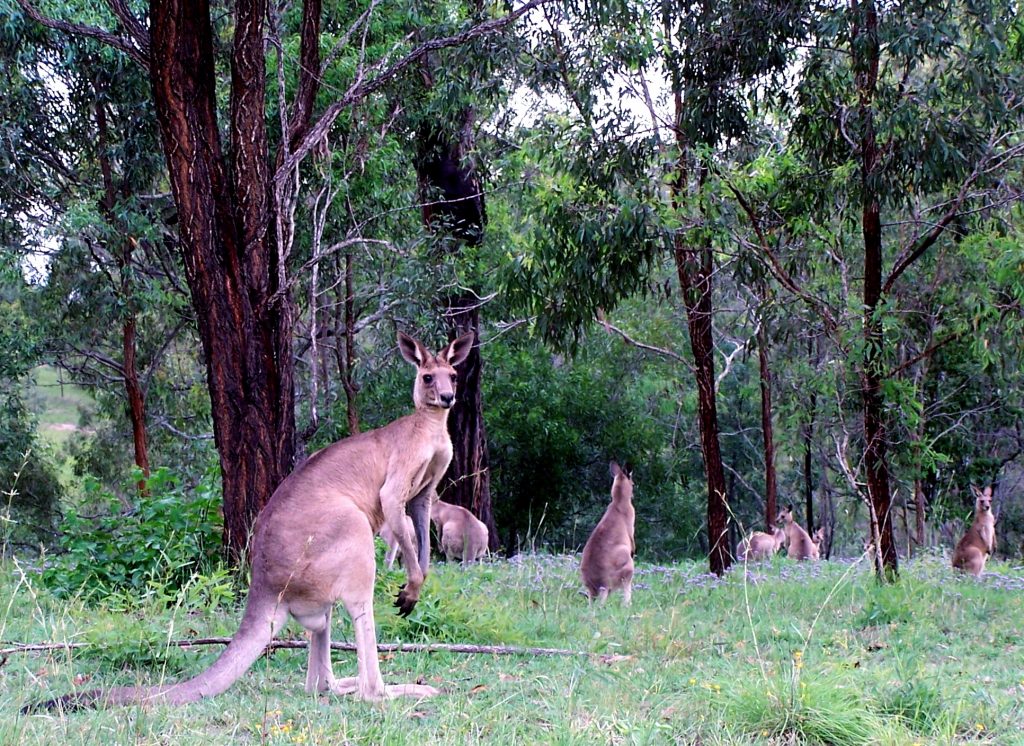

On to the Araucaria property, we visit the Scenic Rim Wildlife Ecology Centre, and wait by the creek just before dusk in the hope of seeing wild platypus. We don’t always see the platypus, but while waiting we often see turtles, catfish, cuckoodoves, honeyeaters, kingfishers and other wildlife. The platypus are more predictable in the latter half of the year, when they are breeding and don’t stray far from their nests: they are around throughout the year, but we have less luck finding them January to June.



Next we look for possums, owls and other nocturnal wildlife either on our way back to Kooralbyn or after dinner (depending on season, and thus sunset times) . Some nights we don’t see much at all, other times we see and hear quite a variety: possibilities include red-necked wallaby, red-necked pademelon, koala, common brushtail possum, mountain brushtail possum, greater glider, squirrel glider, sugar glider, bandicoot, fruitbats, barn owl, boobook owl, sooty owl, tawny frog-mouth, owlet nightjar, carpet python and (on warm wet evenings) various frogs.
Usually at least part of our nocturnal search will be along a transect forming part of a study of a wildlife corridor route (through Wildlife Queensland, of which Ronda is chair of the Scenic Rim branch). Our guests thus become citizen scientists helping to study wildlife species occupying areas planted as wildlife corridors and for habitat enhancement, and changes over time.
DAY TWO of the wildlife tour
Rise early if you wish to do some birdwatching or roo-watching in the grounds of the Kooralbyn Valley resort.
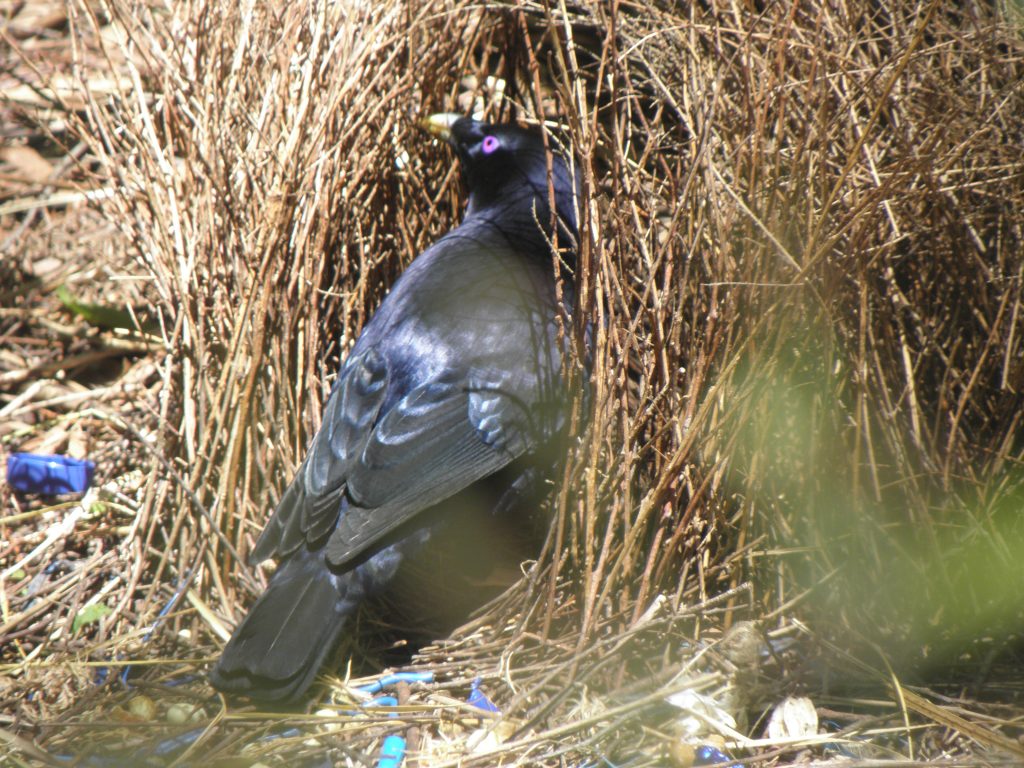

After breakfast we head to O’Reilly’s Rainforest Retreat at Lamington National Park, where we spend the morning exploring the World Heritage rainforests and seeking forest birds. Those who wish to can participate in another citizen scence project, looking for and if possible photographing birds that disperse the seeds of rainforest plants.


Birds we typically see in the rainforest include brush turkey, crimson rosella, king parrot, logrunner, three species of scrubwren, satin bowerbird (and sometimes regent bowerbird), brown thornbill, brown gerygone, eastern yellow robin, pied currawong and eastern whipbird. With some luck we may also see wompoo fruitdove, topknot pigeon, Albert’s lyrebird (the world’s best mimic), noisy pitta, paradise riflebird (the only bird of paradise outside of the tropics), rose robin and many others.

Pademelons (small wallabies) often make an appearance in the forest or on the lawn of the neighbouring campground. In warmer months we may also see carpet pythons, land mullets and other reptiles, often basking on rocks in the sun. We also often see whiptail and red-necked wallabies in the more open habitats along the way to and from O’Reilly’s.

On our return journey we visit a colony of fruit bats (flying foxes) in Canungra. Although some microbats in Latin America, New Zealand and elsewhere, this group of bats (megabats) is found only from Africa through tropical Asia to Australia and the southwest Pacific.
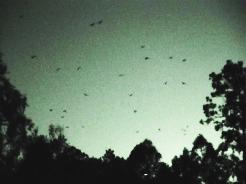
Depending on the wishes of our guests, we will either return to Kooralbyn in time for dinner (with the option of further nocturnal searches to follow) or dine at the Canungra Hotel so we can watch a colony of noisy flying foxes (fruitbats) take to the skies at dusk in search of flowers and fruits.
DAY THREE of the wildlife tour

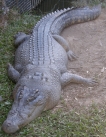
After breakfast we travel to Canungra for morning tea and on to the southern Gold Coast to visit the David Fleay Wildlife Park, where we see some of Queensland’s outback species (e.g. bilby, hopping mice) and tropical northern species (cassowary, crocodiles, tree kangaroo) as well as some local species that can be difficult to find in the wild (e.g. platypus, greater glider.
The Wildlife Park was started by the zoologist David Fleay in the 1950’s. David (who was also a founding member of Wildlife Queenlandwas the first to ever breed the platypus in captivity, and one of the last people to interact with a living thylacine. He was successful in breeding many rare species and when in his 80’s he handed his precious property over to National Parks for a low sum.
It is one of the few places we can watch the platypus swimming under water, using its rubbery bill to seek vibrations and electrical impulses from its prey.
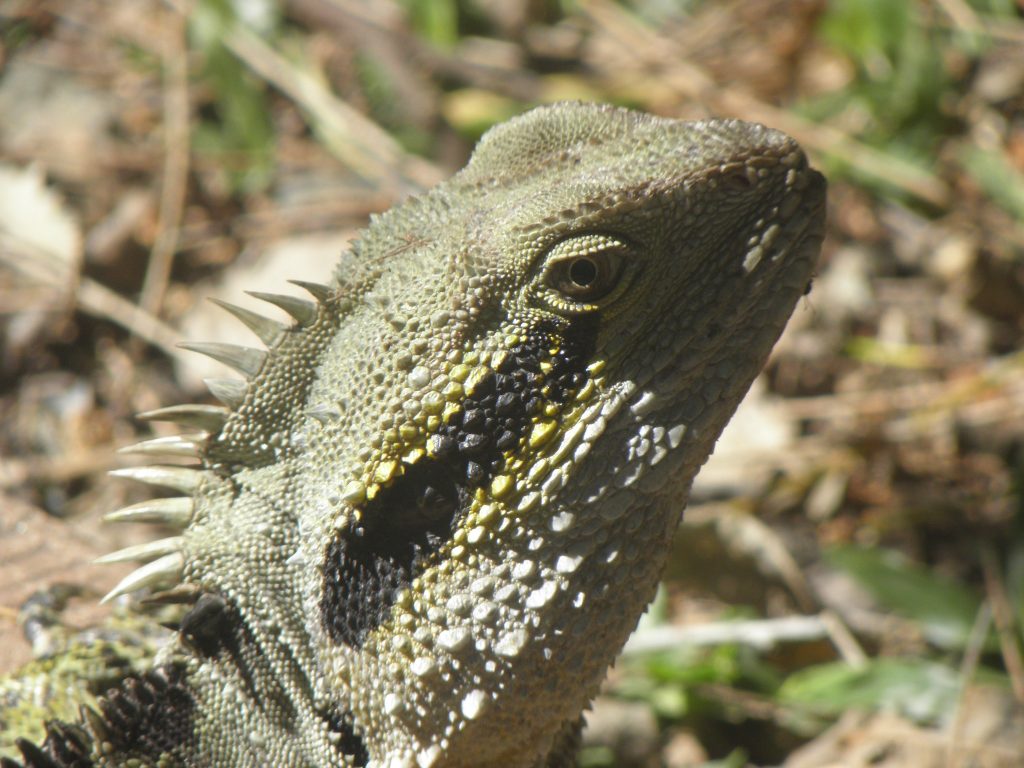
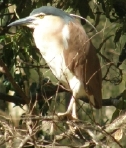
There are also animals that bring themselves in from the surrounding bush and make the park their home, from eastern water dragons to nankeen night herons and magpie geese.


After lunch we may have time for a short beach walk, but our main destination will be Coombabah, where we enjoy an a leisurely walk through eucalypt forest and tea-tree wetland, seeking birds, koala, wallabies and large mobs of kangaroos, before returning to Brisbane.

With small group sizes (usual maximum is ten), this is not a hurried herding of tourists on and off buses, into souvenir shops, etc. Our emphasis is on spending time in a variety of scenic natural habitats at the times of day that maximise our chances of seeing native mammals, birds, reptiles and other wildlife.You will have ample opportunity to tell us your interests, and although we can’t fulfil every wish (for instance, when seeking wild animals , we can’t guarantee particular species, and we can’t ask them to change their daily schedules to fit with conventional human mealtimes) we will try to make your days as enjoyable and fulfilling as possible. You can let us know any time you want to stop for photos or anything else of interest, and ask as many questions as you like – if we don’t know the answers we will suggest ways of finding out.
We uphold the ideals of ecotourism: environmentally sound, quality information, nature-based and supporting local communities. All our tours have achieved advanced eco-accreditation
Araucaria Ecotours are members of Ecotourism Australia, Wildlife Tourism Australia (Ronda is chair), Queensland Tourism Industry Council, Destination Scenic Rim, and Brisbane Marketing
